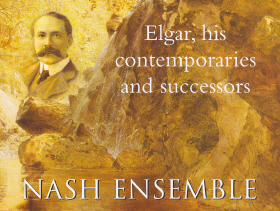

 |
 |
|
 Nash Ensemble Saturday 9 Dec 2006 Frank Bridge: Cello Sonata in D minor (1913-17) Benjamin Britten: Cello Sonata in C Op. 65 (1961) Frederick Delius: Violin Sonata No. 2 (1923) Samuel Coleridge-Taylor: Clarinet Quintet (1895) Edward Elgar: Piano Quintet in A minor Op. 84 (1918) Nash Ensemble Marianne Thorsen (violin) Richard Hosford (clarinet) Paul Watkins (cello) Ian Brown (piano) A few thoughts only about this long evening of British music from the 1890s to the early '20s. I am not really the right person to review this repertoire. The 6.15 pre-concert included one of my Britten favourites, the cello sonata - well played by Hosford and Brown, preceded by a good presentation of the sonata by Frank Bridge, until recently best known as Britten's mentor, latterly come into his own as one of the most stylistically searching of early 20C British composers. Coleridge-Taylor's Clarinet Quintet (written as a 19 yr old student in response to Stanford's challenge for a chamber work uninfluenced by Brahms) nods towards Dvorak instead. It did not grab my interest. By no means an anti-Elgarian, I cannot take the heart-on-sleeve excesses and repetitiveness of his Piano Quintet, and after some years approached another hearing of it with trepidation. Despite an account full (over-full?) of ardour, superbly balanced between lustrous strings and judicious piano playing, so that it never became a contest between them, I could not empathise with its unrestrained emotionalism, Better by far, and indeed best of the evening for me, was Marianne Thorsen's playing of the Delius sonata, one which needs every help from its performers. This Norwegian violinist is quietly prominent in UK chamber music (q.v. marvellous CDs of Dohnányi, Martinů & Schönberg String Trios, and the Brahms piano quartets with Hamelin) and I greatly enjoyed a first opportunity to hear her as soloist. A note about seating at the Wigmore Hall; it is widely repeated that the acoustics are excellent whereever you sit, and some critics have complained about the Hall's arrangements for the Press. It is rare to have an opportunity for comparisons within an evening. For the cello sonatas we were encouraged to sit anywhere, and I chose the middle of the hall. Back to our allocated seats for the main programme (generally sides of Rows W/X), clarity of the piano and strings sonority were markedly better, as I had previously come towards believing; the press department does us proud! Peter Grahame Woolf
|